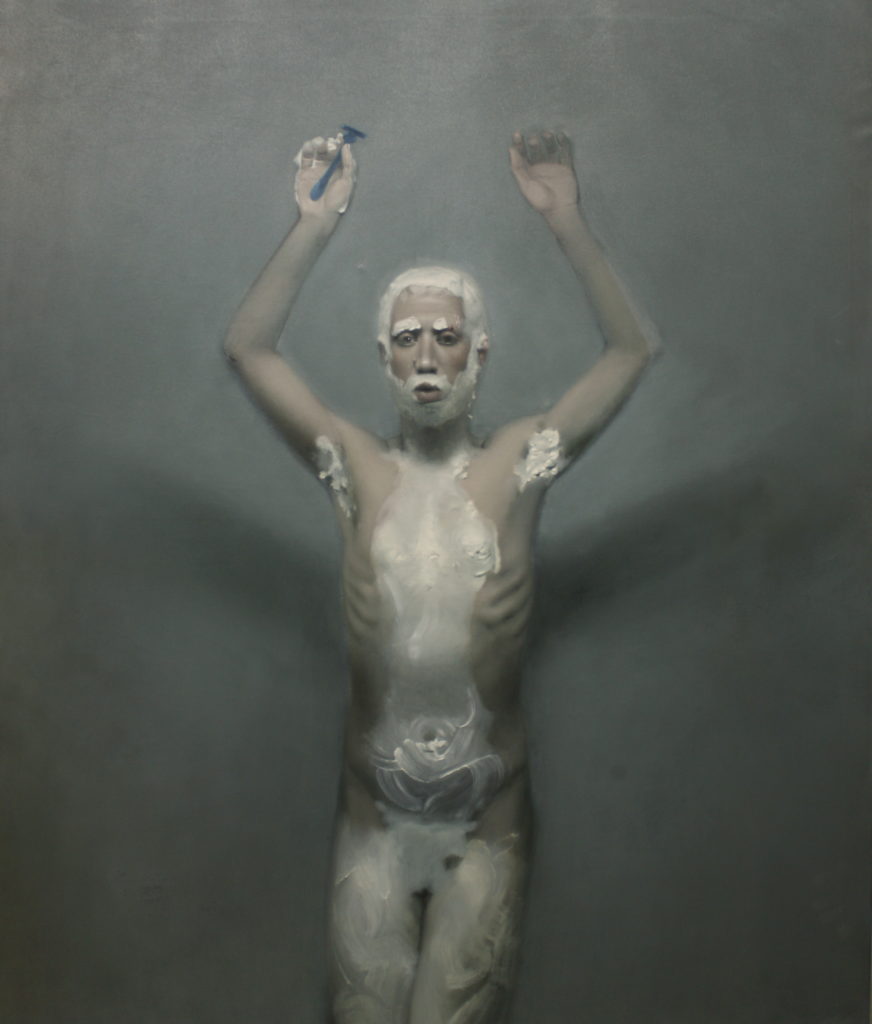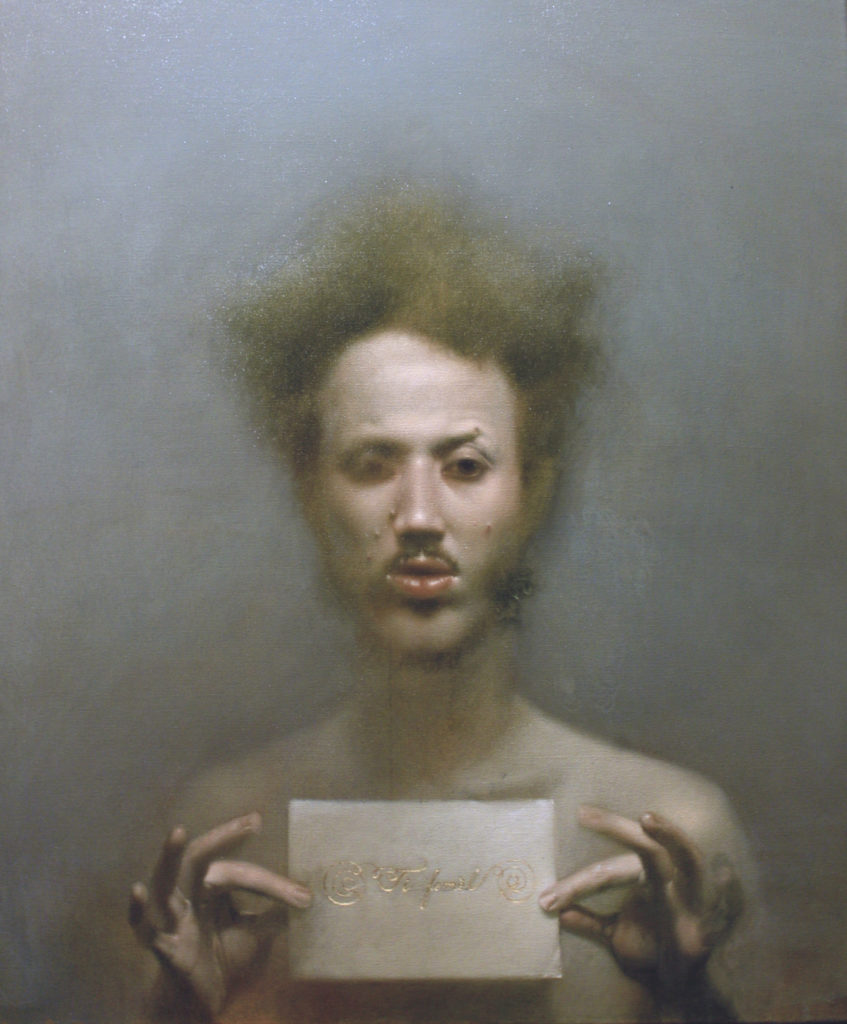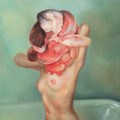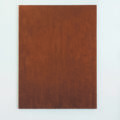ABEL TECHER AND THE GENDER FLUIDITY
I didn’t want to write about your work Abel, I just wanted to transcribe the exchange we had yesterday in your workshop and publish it as it is. It’s not that I lacked the desire, quite the contrary, but your painting is so intimate that it seemed inappropriate to impose my words on it. Writing about your work is like changing the furniture in a house where you are a guest, it is not done. But you asked me – to know my opinion, you said. So I will try to tell you how I felt about your paintings and, since this text is to be published, I will try – carefully – to explain to the person who will read it what they are about.

You’re the one we’re seeing. You’re here before us, dressed in your hairless flesh. Before you started to paint, you dropped your clothes, put on some gel and let that razor slide against your skin. The blade cut off all the hair your body produces: the hair on your legs, pubis, torso, face and skull. So here you are, in front of us, completely naked. Your face, because you have removed her eyebrows, has strange emotions. You know, Abel, I’ve always had trouble looking at a completely shaved face. Historically, it is one of the first forms of violence that torturers inflict on the condemned: witches were successively shaved to find the satanic mark on their bodies, the skulls of deported people, then those of women accused of having slept with the enemy at the end of the Second World War; today, a shaved head is also a sign of long, painful and sometimes vain chemotherapy. But for you, the symbolism is different.
You’re depicting a body that sails. Like the drag-queen that wraps her face and covers her hair, you get rid here of the standard attributes of the genre. A tabula rasa to rid your body of the social representations imposed on it. For me, this is not a travesty, since you don’t undo one gender in order to take hold of the other. The identity that you offer yourself in these paintings is indefinable, remodelled and above all can be shaped as you wish. We understand this with the staging of the plasticity of your flesh: you pull on your torso so that a chest is formed, slide your sex between your thighs to hide it, you draw other possibilities of existence.
On Tuesday, you also explained to me that you had recently started painting. You can see that: there are thighs that are too thin, muscles that are too short, not everything is perfect. But it doesn’t matter! Your virtuosity is elsewhere. You just have to let your eye wander over the shine of a porcelain or the powder of a cheek to be convinced. Also, it might have seemed ironic to see you choose such a definitive medium to address the question of fluidity. When you work on the genre, if you want to propose new representations, you first try to put to the test those that today are authentic. It touched me, Abel, to see how important it was for you to pose things without fixing them, without making them definitive. You went to the side of the reborn Italy to understand sfumato, so that – even in your technique – frames, limits and contours would be pushed aside. So that in your paintings, everything is transparent and blurred, everything is dispersed.

I hope the people who visit your exhibition will take the time. I hope that they will let themselves be caught by this avatar moving from canvas to canvas, that they will dare to look at this body that you offer us; I hope that they will abandon themselves to this sensation of half-sleep that offers your mythology the freedom to blossom. But above all, I hope that this vaporous dream into which your works have plunged me will one day come true. Thank you so much Abel, you have impacted me.
Exposition personnelle à la Maëlle Galerie, Paris
Du jeudi 6 février au jeudi 20 mars 2020.
Vernissage le jeudi 06 février 2020 de 18h00 à 21h00.






